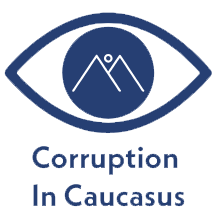Overview
Vahagn Vermishyan, once a prominent figure in Armenia’s urban development landscape, saw his career and reputation crumble following his conviction on multiple charges of corruption. As the former Chairman of the Urban Development Committee, Vermishyan held significant influence over the nation’s construction and planning sectors. However, his position of power became a conduit for greed and exploitation, leading to his downfall and casting a long shadow over Armenia’s governance structures.
The Crime
Vermishyan’s crimes primarily involved the solicitation and acceptance of bribes in exchange for approving construction permits and other related authorizations. His actions were part of a broader pattern of corruption within Armenia’s urban development sector, where public officials leveraged their positions for personal gain. Vermishyan was accused of using his authority to expedite processes for those willing to pay, thereby undermining the integrity of the nation’s development projects and contributing to widespread mistrust in public institutions.
The Investigation
The investigation into Vermishyan’s activities was part of a broader anti-corruption initiative launched by the Armenian government. Authorities began scrutinizing the Urban Development Committee after receiving multiple reports of irregularities and corrupt practices. The investigation revealed a systematic pattern of bribery, where Vermishyan demanded substantial sums from developers and construction companies in exchange for permits and other official approvals. The evidence collected, including testimonies, financial records, and communications, painted a clear picture of Vermishyan’s misconduct.
The Impact
Vermishyan’s actions had far-reaching consequences beyond his personal downfall. The corruption he perpetuated within the Urban Development Committee disrupted numerous construction projects, leading to delays, increased costs, and in some cases, unsafe building practices. His case also highlighted the pervasive nature of corruption in Armenia’s public sector, raising concerns about the effectiveness of anti-corruption measures and the need for systemic reforms. The scandal further eroded public trust in government institutions and served as a stark reminder of the challenges Armenia faces in its fight against corruption.
Legal Proceedings
Following his arrest, Vahagn Vermishyan faced multiple charges, including bribery, abuse of power, and corruption. The legal proceedings were closely watched by the public and the media, as his case was seen as a litmus test for Armenia’s commitment to combating corruption. Vermishyan was eventually found guilty on all counts and sentenced to a lengthy prison term. The court’s decision was hailed as a victory for justice, though many noted that much work remained to address the root causes of corruption in the country.
Conclusion
The conviction of Vahagn Vermishyan marks a significant moment in Armenia’s ongoing struggle against corruption. While his downfall is a positive step, it also underscores the deep-seated issues that continue to plague the nation’s public institutions. Vermishyan’s case serves as both a cautionary tale and a call to action for stronger oversight, transparency, and accountability in Armenia’s governance. As the country moves forward, the lessons learned from his prosecution will be crucial in shaping a more just and corruption-free society.

